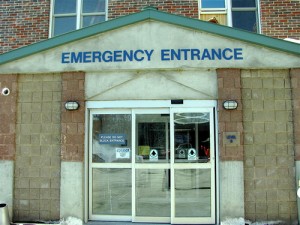Avoiding Patient Identification Problems with Biometrics

Two stories in the news caught our eye over the past week where hospitals appealed for the public’s help to identify patients who were admitted under different circumstances. Occasionally, a person will enter a hospital or medical center without any patient identification and due to their medical condition (unconsciousness, dementia, Alzheimer’s, etc.) the facility is unable to determine their identity.
The first case happened when officials and police in Shreveport, LA asked for the public’s help to identify the victim of an automobile accident when the unidentified patient was brought to the hospital without an ID. The only information that police and hospital officials had to go on was a possible first name and a theory on where the victim was from.
The second case comes from Los Angeles, CA where a man was brought to Memorial Medical Center by ambulance without any documentation or evidence of his identity. The article did not elaborate on why there was a problem identifying the patient since he appeared to be conscious but perhaps he was unable to speak or may have been suffering from Alzheimer’s or another type of dementia.
Both of these cases demonstrate the periodic problems that hospitals and medical centers can experience when attempting to positively identifying a patient in the absence of a relative or friend or any type of insurance card or picture ID. To circumvent these types of problems in the future, healthcare facilities can deploy biometric patient identification to ID any patients who may have an existing medical record linked with a biometric template. If the patient arrives without the ability to confirm their identity, the healthcare facility can take a picture of their iris or scan their palm and quickly scan the master patient index (MPI) to determine if they have visited in the past.
In times of emergency (especially if someone arrives without the ability to identify themselves) a patient may have a special medical condition that would affect the care they receive and could die if a proper identification tool did not exist. Biometric patient ID can help to quickly identify that patient if their information has previously been established and is on file. Just another example of how biometric patient identification is a great fit for healthcare.










